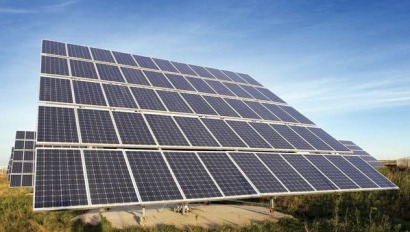
The company has requested a certificate of public convenience and necessity from the Indiana Utility Regulatory Commission. If approved, Duke Energy Indiana will own and operate the facility, which is expected to be placed into commercial service later this year.
The solar facility will connect to the electric grid at a Duke Energy Indiana-owned substation on NSA Crane property. It will feature approximately 76,000 solar panels constructed on roughly 145 acres in the southeast portion of the naval base, making it one of the largest solar facilities in the state.
The power generated by the solar facility will be available to Duke Energy Indiana customers and the Navy will continue to purchase power from Duke Energy Indiana.
"This project further advances our commitment to bring more renewable energy to our customers and we are pleased to again be working with the Department of the Navy," said Melody Birmingham-Byrd, president of Duke Energy Indiana.
The facility marks the second solar project that Duke Energy is building in partnership with the Department of the Navy. The company previously announced in a 13 MW solar facility at Camp Lejeune in Eastern North Carolina, which is now operational.
"This project exhibits the Department of the Navy's commitment to renewable energy," said Cmdr. Timothy Craddock, NSA Crane commanding officer. "Likewise, it helps solidify Crane's longevity as a community partner, providing local and regional energy security through diversified energy sources."
Separate from this project, Duke Energy Indiana has signed agreements with solar developers to purchase up to 20 MW of solar power at four Indiana locations.
Two of these solar facilities in Vigo and Clay counties are in service now; the remaining two facilities are expected to be in service in early 2016. In addition, the company, in coordination with the Indiana Office of Utility Consumer Counselor, is investing $1 million to fund research at the Battery Innovation Center near NSA Crane to study how battery storage can maximize renewable power sources, such as rooftop solar panels and small wind turbines, and integrate them into the electric grid.
For additional information:

